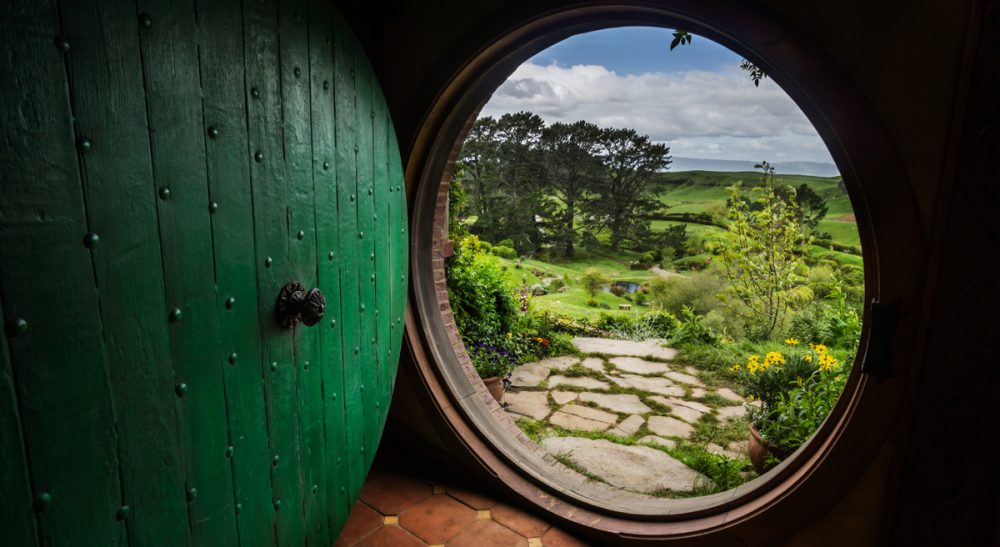Advertisement
Happy Birthday, 'Lord Of The Rings'

Sixty years ago today, “The Fellowship of the Ring,” part one of J.R.R. Tolkien’s masterwork, “The Lord of the Rings,” was published in the United Kingdom.
Tolkien conceived of the novel as one book, not three. He would have preferred for its approximately 1,200 to 1,500 pages (depending on the edition) to appear between just one set of covers. But his publisher, George Allen & Unwin, decided to mete out the fantasy narrative and release it as a trilogy over 15 months. “The Two Towers” came out in November, 1954, and “The Return of the King” hit bookstore shelves the following October.
The trilogy decision was prescient and would become the forebear of the generation-spanning “Star Wars” sequels, the blockbuster “Harry Potter” series and the “Game of Thrones” franchise that is thriving today in bookstores (and on cable). Among Tolkien’s gifts, arguably (and what his publisher was, no doubt, betting on), was his ability to create a richly-imagined world in which a reader might want to linger for months on end, until the next in the series was issued, and then go back again and again.
With Tolkien, there’s always a fuzzy corner of the map, a village or forest or sea, or a character or sub-plot we want to know more about, but can’t, because Tolkien didn’t write it.
What accounts for Middle-earth’s appeal? And why do so many readers want to make a return visit?
Though detailed most extensively in “The Lord of the Rings,” Tolkien’s fantastical Middle-earth is the thru-line in several of his works, from “The Hobbit,” published in 1937, and “The Adventures of Tom Bombadil,” which came out in 1962, to the posthumously-published “The Silmarillion,” which appeared in 1977. Each story, poem, appendix and unfinished tale adds further layers and echoes to Middle-earth. Like concentric circles, each of Tolkien’s books overlaps to create his “legendarium.”
That legendarium seems real. Its rules and history, even its geography and weather, are plausible. The appendices to “The Return of the King” list family trees, “Annals of the Kings and Rulers," and glossaries for Elvish and Dwarvish, Tolkien’s invented languages. In some places, bloodlines, legends and myths that Tolkien spread over thousands of years get full descriptive treatment; in others, they're merely hinted at. This means that for every tale fully told, there are a dozen other tales that are suggested. With Tolkien, there’s always a fuzzy corner of the map, a village or forest or sea, or a character or sub-plot we want to know more about, but can’t, because Tolkien didn’t write it.
Advertisement
That gap between what Tolkien made explicit and what he merely hinted at is his genius. As we yearn for more, we fill in the unknowns ourselves, charging our imaginations with the task of taking us there.
In a bare-bones timeline at the back of “Lord of the Rings,” Tolkien hints at further adventures of the major characters. He is clever, even mischievous, about drawing us in with ambiguity. Phrases such as, “it is said” or, “there is no record of,” keep readers guessing. Legolas and Gimli may have sailed off across the seas. Or they may not have. We don’t know, and that’s part of what draws us closer to his flickering storytelling fire.
We can’t travel to [Tolkien's] magical realms, embark on epic quests, feel the weight of ancient rivalries or wage good wars. But he makes us want to.
As fantasy, “Lord of the Rings” manages the neat trick of ringing true. Middle-earth maybe be filled with dwarves, hobbits, elves and orcs, but they seem human. Like the protagonists of any work of fiction, they have desires and motivations and complexities. They get entangled in complicated plots. The novel’s themes of good and evil, fellowship and corruption, sacrifice and treachery, are universal.
And in spite of his efforts to make the fantasy relatable, Tolkien also understood that it’s the un-real that grabs our attention. “This can’t happen to you,” the author seems to suggest, “but I want to you to dream that it might.” We can’t travel to his magical realms, embark on epic quests, feel the weight of ancient rivalries or wage good wars. But he makes us want to.
This push and pull, this drawing us in while keeping us at arm’s length, is what makes his Middle-earth all the more enticing.
As Bilbo Baggins once sang:
The Road goes ever on and on
Down from the door where it began
Now far ahead the Road has gone
And I must follow, if I can.
May we keep following you, J.R.R. Tolkien.
And Happy Birthday, “Lord of the Rings.”
Related:
